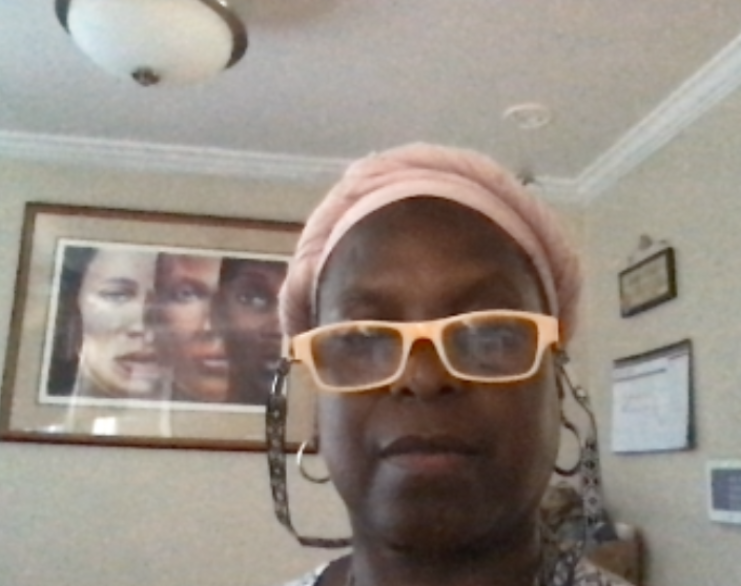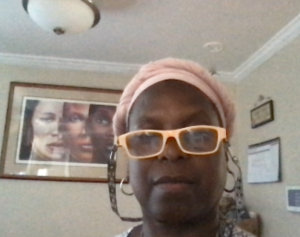
Disrupting Patterns of Inequity for our African American Students: The Power of Focal Students
I remember it all began on August 12, 2022, a few days before school started. Our Monroe leadership team had chosen to meet and plan early before the school year started. We knew we had important work to do, because the previous year, fall of 2021 & spring of 2022, our entire staff over many meetings had agreed to focus on African American students after our principal first explained to our Instructional Leadership Team (ILT), that she felt that it was time that everyone on our school’s teaching staff chose, focus on and document strategies to positively connect with and work to effectively educate to improve one (1) specific African American student’s academic scores in our class. Our Monroe academic data, STAR and California Assessment of Student Performance and Progress (CAASPP) Assessments, had over the years consistently scored “Black” students well below other cultural groups. All teachers experienced these findings in their classrooms.
I knew of the dismal basic statistics about “Black” children’s academic performance that showed throughout compulsory public school history. There was a trend that was published by many studies, which showed that the longer “Black” students (mostly males) went to public schools the worse they performed academically. For example the Schott Foundation in a research study shows, “only 47% of Black males graduate from high school” and “every state, with an exception of New Jersey, who with this foundation’s vital support, is now the only state with a significant Black population with a greater than 65% high school graduation rate”. Additionally, educator Zaretta Hammond in her book Culturally Responsive Teaching & the Brain wrote, “Many children begin school with small learning gaps, but as they progress through school, the gap between African American and Latino and White students grow because we don’t teach them [African American and Latino students]how to be independent learners. They become “Dependent learners”.
Personally, I believe that not only aren’t these students being taught to be independent learners, I also believe that many teachers have traditionally interrupted and impeded these students’ natural tendencies to be independent learners through their teacher centered classrooms where the teacher is unequivocally the academic authority in the classroom, allowing little to no questioning of that said policy or teaching and learning styles.
The research confirmed what I knew, but what I was excited about was that I could now do this with the force of the entire teaching staff, the grades below and continuing to the grade above. Furthermore, I wondered if we would be able to get over our own biases and blindspots and maybe even what we had been taught in the past as teachers that was limiting, in respect to being culturally responsive, so that we could support ALL of our students effectively?
I do believe that all teachers want to teach their kids. We come in with the right intentions, but so many things can and do get in the way.
In the fall of 2022, we began our process to respond to this data. In our staff meetings, we completed a form documenting which student we would focus on and why. We wanted to document teacher thinking and actions so that it was tangible and we could hold ourselves and each other accountable. We agreed to expand that form with monthly updates as to the student’s progress. We would do this for the rest of the year. I was excited and curious to see how our staff responded to this directive. Lead by Learning supported our team through this inquiry into supporting our teachers to support our African American students. I believe knowing that Lead By Learning would provide our ILT space and time to brainstorm, plan, critique, analyze and revise our focus and process would enable us to drive our teaching, give us a sense of support that allowed us to feel capable, and support us to not be on our own to be effective, focused and efficient.
My focus student, Aliyah* was an excellent reader, from decoding to excellent tone and flow. According to her STAR reading scores she was in the 80 percentile. However, her math was in the 30 percentile, way below grade level. Because her reading and math skills were incongruent and it didn’t make any sense to me, I wanted her to be my focal student. Being able to focus directly on and only on her for 20 -60 minutes every day for a week, I was able to discover how she learned and her slow, methodical process for attacking mathematical situations. I discovered that she was missing some key standard math algorithms and vocabulary knowledge. After that I was able to plan with her for her. After discussing our observations she understood why she felt so confused and unable to catch on. We used her strong reading skills and love of reading to progress her math. She was now becoming (re-becoming) what Zaretta Hammon referred to as an independent learner.
Another thing I did based on my focal student work is I created cultural affinity groups. I took the ELD required time and expanded it so it would be a natural part of the day to work with groups of students with things in common, so no student felt like one group of students was getting extra time because they were lacking, instead everyone received small group support because they were special and unique. Using the ELD model, I added an African American student group and I had a group for my students who were Asian Americans, Latino and my two White students as well. We had time to talk about our experiences, language, questions and thinking. For my African American students we talked about mathematics and how that was our second language because, for many African Americans both adults and students, they don’t know where their ancestors came from or their mother tongue. So, we created a space to talk about our roots and our shared experience.
Because this was a school-wide effort, I was not working alone to support this student. The Intervention coordinator had worked with this student for a couple of years and had the same feelings that I did; confusion as to why this student had this incongruent relationship between language arts and math. The form we created as an ILT and updating it frequently was an impetus to our conversations. We were able to share data about what we learned about how this student was learning and this led to more collaboration. We were able to change our focal students’ mindset about herself and be more encouraged to share aloud.
This experience led me to look forward to the following school year. I was inspired. The principal asked our leadership team to come up with suggestions for next steps, both as individual teachers and for the school at large. Some of the ideas I have proposed:
- Continue with the focus on individual African American students
- Spread the practice of cultural affinity group time around the school. When I put my focus student Aliyah*, in the African American culture group, I was able to focus on her as a collaborator and as well as an individual.
- Support the adoption of the growth mindset strategies of “I can’t YET” to encourage patience and hope.
- Creating space for students to share their thinking out loud, helped Aliyah and I to expose her confusion in mathematical algorithms, for example, how to correctly line up numbers/place value knowledge when regrouping was necessary.
There is so much to celebrate from this last school year. Aliyah learned that as she practiced slowing down and checking for logical answers she began to make tremendous progress. In September 2022 she was “Urgent Intervention ” STAR Math Level and by April 2023 she got to the “Watch” level, which is huge growth. Both Aliyah and I are so proud of her progress.
Aliyah* is a changed/fictitious name to preserve student confidentiality
 Ms. Michelle Henry-Ellis is a 4th grade teacher at James Monroe Elementary school in San Leandro Unified School District. She has been teaching in the Bay Area for almost 30 years. Michelle favortie things (in no particular order) include teaching elementary school students, spending quality time with her children and grandchildren, and taking vacations to resorts with excellent accommodations and cuisines, and having her own quiet time. Her wishes for herself and the world is worldwide harmony for people and nature and land to growth healthy food for a healthy family.
Ms. Michelle Henry-Ellis is a 4th grade teacher at James Monroe Elementary school in San Leandro Unified School District. She has been teaching in the Bay Area for almost 30 years. Michelle favortie things (in no particular order) include teaching elementary school students, spending quality time with her children and grandchildren, and taking vacations to resorts with excellent accommodations and cuisines, and having her own quiet time. Her wishes for herself and the world is worldwide harmony for people and nature and land to growth healthy food for a healthy family.
Interested in working with Lead by Learning to support your educators and teacher leaders? Connect with a member of our team to learn more about our partnerships.
